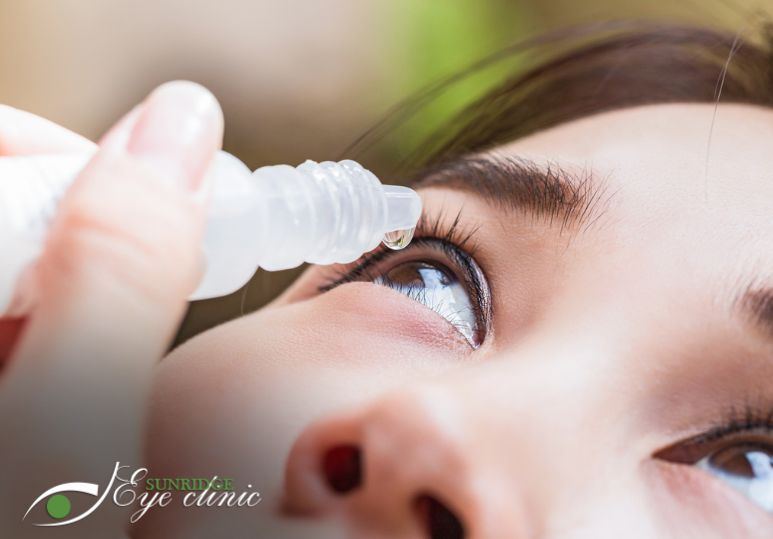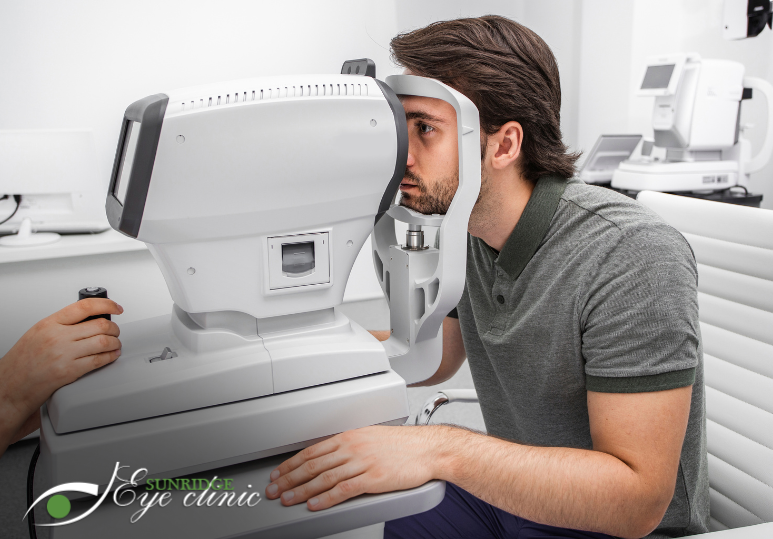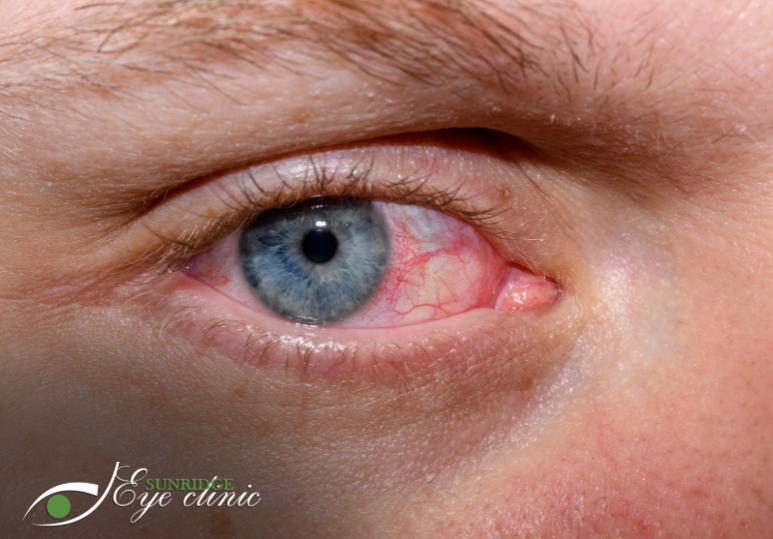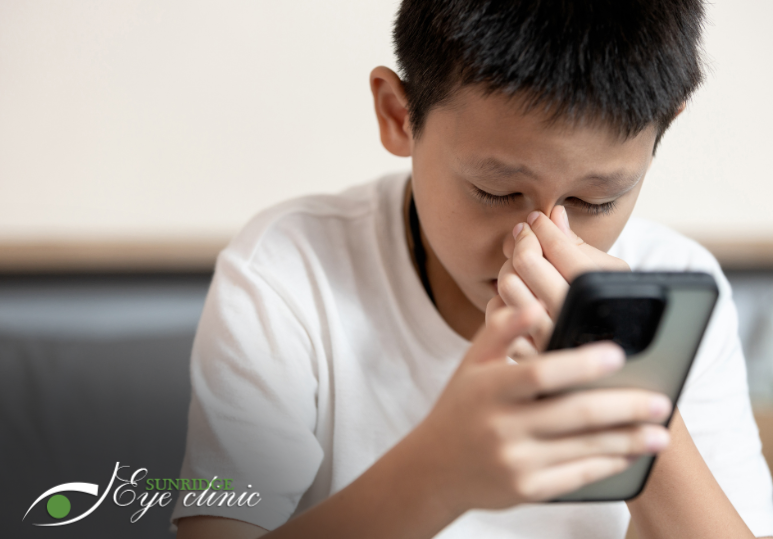Dry eye is a common condition that affects many people in Calgary, often leading to discomfort and irritation. Whether it’s a persistent itch, a gritty sensation, or redness, dry eye can significantly impact your daily life. Fortunately, understanding the root causes of dry eye can help you take the right steps to prevent it. At Sunridge Eye Clinic, we’re committed to helping you maintain optimal eye health. In this blog, we’ll explore five common causes of dry eye and provide practical tips on how to prevent them.
1. Environmental Factors: Calgary’s Dry Climate
Calgary’s dry, cold climate is one of the leading causes of dry eyes. The low humidity levels, particularly in the winter, can cause tears to evaporate more quickly, leading to dryness and irritation. Windy conditions and exposure to air conditioning or heating systems can further exacerbate the problem.
Prevention Tip: Protect your eyes by wearing wraparound sunglasses when outdoors to shield them from the wind. Consider using a humidifier at home to add moisture to the air, especially during the colder months. Regularly lubricate your eyes with artificial tears, particularly when spending extended time in dry environments.
2. Prolonged Screen Time: Digital Eye Strain
In our increasingly digital world, many of us spend hours each day staring at screens, whether it’s a computer, smartphone, or tablet. Prolonged screen time can lead to digital eye strain, which often results in dry eye symptoms. When focusing on a screen, we tend to blink less frequently, causing the eyes to become dry and irritated.
Prevention Tip: Follow the 20-20-20 rule: Every 20 minutes, take a 20-second break and look at something 20 feet away. This helps reduce eye strain and encourages regular blinking, keeping your eyes moisturized. Adjust the lighting in your workspace to reduce glare and consider using artificial tears to keep your eyes hydrated throughout the day.
3. Aging: Natural Changes in Tear Production
As we age, our bodies undergo various changes, including a decrease in tear production. This natural decline in tear production can lead to dry eyes, particularly in individuals over the age of 50. Hormonal changes, especially during menopause, can also contribute to dry eye in women.
Prevention Tip: Follow the 20-20-20 rule: Every 20 minutes, take a 20-second break and look at something 20 feet away. This helps reduce eye strain and encourages regular blinking, keeping your eyes moisturized. Adjust the lighting in your workspace to reduce glare and consider using artificial tears to keep your eyes hydrated throughout the day.
4. Medications: Side Effects That Impact Eye Moisture
Certain medications can have side effects that reduce tear production, leading to dry eyes. Common culprits include antihistamines, antidepressants, diuretics, and medications for high blood pressure. If you’re taking any of these medications and experiencing dry eye symptoms, it’s important to address the issue.
Prevention Tip: Speak with your healthcare provider about your symptoms. They may adjust your medication or recommend using lubricating eye drops to alleviate dryness. Never stop taking prescribed medications without consulting your doctor. If you’re prone to dry eyes, inform your healthcare provider before starting new medications.
5. Contact Lenses: Irritation and Discomfort
While contact lenses are a convenient option for vision correction, they can also contribute to dry eyes. Contacts can reduce the amount of oxygen that reaches the cornea, leading to dryness and discomfort, especially if worn for extended periods or if not properly cared for.
Prevention Tip: Make sure to follow proper contact lens hygiene, including cleaning and storing your lenses as directed. Consider using daily disposable lenses, which reduce the risk of irritation and dryness. If you experience persistent dry eye while wearing contacts, discuss alternative options with your eye doctor, such as switching to a different type of lens or using rewetting drops.
Dry eye can be a frustrating and uncomfortable condition, but by understanding its common causes, you can take proactive steps to prevent it. Whether it’s adjusting your environment, managing screen time, or making dietary changes, these simple tips can help you maintain healthy, comfortable eyes. At Sunridge Eye Clinic in Calgary, we’re here to support you with comprehensive eye care tailored to your unique needs. If you’re struggling with dry eye, don’t hesitate to call us for a personalized consultation and effective treatment options. Your vision and comfort are our top priorities.
Written on behalf of Sunridge Eye Clinic.
FAQs
Q: How can Calgary’s dry climate contribute to dry eyes?
A: Calgary’s low humidity levels, especially during winter, cause tears to evaporate more quickly. This can lead to dry eye symptoms such as itching, redness, and a gritty feeling. Using a humidifier and wearing protective eyewear outdoors can help prevent these symptoms.
Q: How does aging affect tear production and contribute to dry eyes?
A: As you age, your tear production naturally decreases, which can lead to dry eyes. Hormonal changes, particularly during menopause, can also contribute to reduced tear production. Staying hydrated and incorporating omega-3 fatty acids into your diet can help maintain tear quality.
Q: Can medications cause dry eyes, and how can I manage this?
A: Yes, certain medications like antihistamines, antidepressants, and diuretics can reduce tear production, leading to dry eye. If you experience dry eye as a side effect, speak with your healthcare provider about adjusting your medication or using lubricating eye drops.






